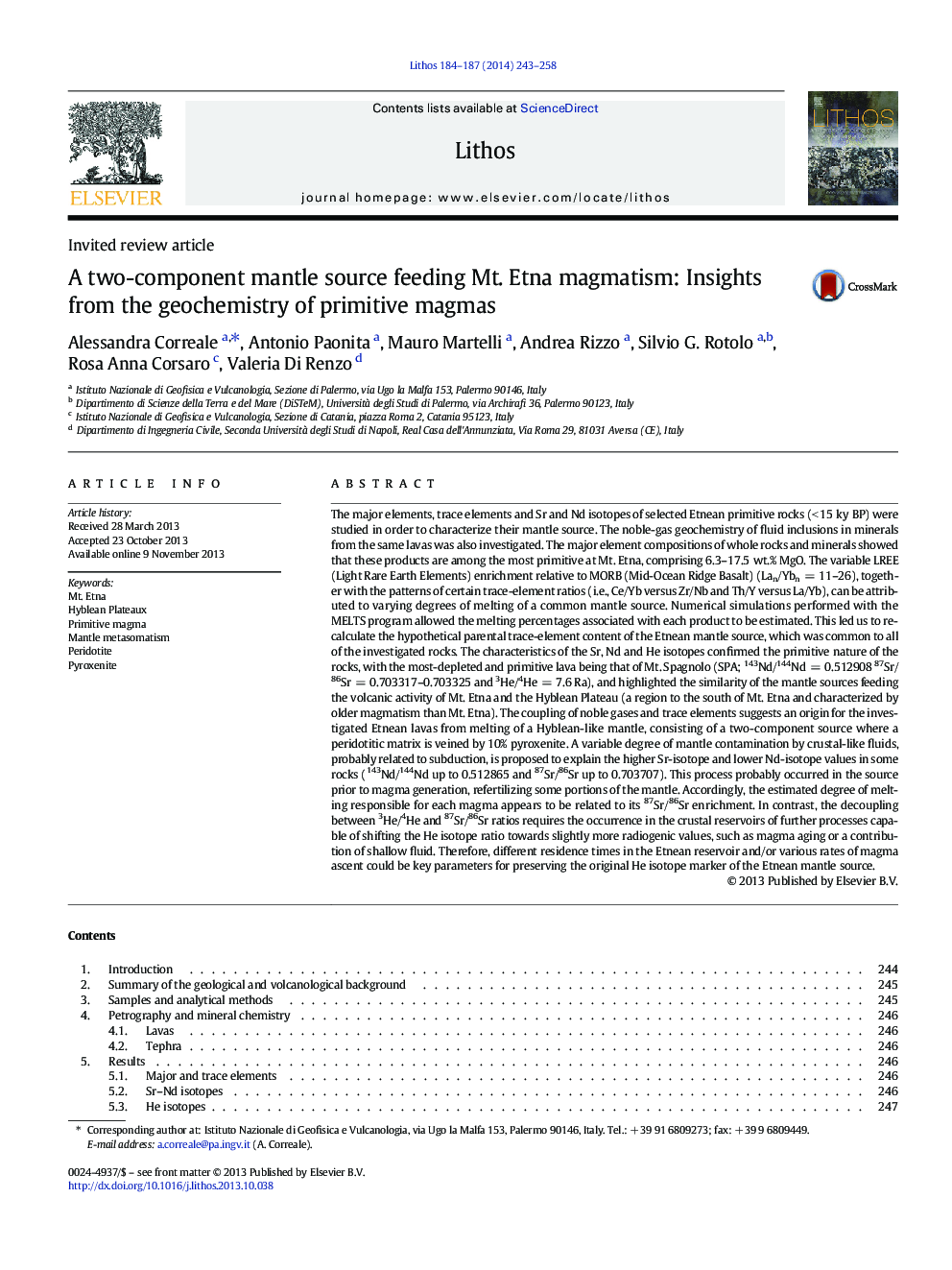| کد مقاله | کد نشریه | سال انتشار | مقاله انگلیسی | نسخه تمام متن |
|---|---|---|---|---|
| 4716118 | 1638683 | 2014 | 16 صفحه PDF | دانلود رایگان |

• Investigation of Etnean mantle by a geochemical study of few primitive volcanics
• Modeling of Etnean mantle source and comparison with that of Hyblean
• A two-component source is common to Etnean and Hyblean mantles.
• The Etnean mantle is variously contaminated by crustal fluids.
• Variable geochemical composition for Etnean magmas from different mantle portions
The major elements, trace elements and Sr and Nd isotopes of selected Etnean primitive rocks (< 15 ky BP) were studied in order to characterize their mantle source. The noble-gas geochemistry of fluid inclusions in minerals from the same lavas was also investigated. The major element compositions of whole rocks and minerals showed that these products are among the most primitive at Mt. Etna, comprising 6.3–17.5 wt.% MgO. The variable LREE (Light Rare Earth Elements) enrichment relative to MORB (Mid-Ocean Ridge Basalt) (Lan/Ybn = 11–26), together with the patterns of certain trace-element ratios (i.e., Ce/Yb versus Zr/Nb and Th/Y versus La/Yb), can be attributed to varying degrees of melting of a common mantle source. Numerical simulations performed with the MELTS program allowed the melting percentages associated with each product to be estimated. This led us to recalculate the hypothetical parental trace-element content of the Etnean mantle source, which was common to all of the investigated rocks. The characteristics of the Sr, Nd and He isotopes confirmed the primitive nature of the rocks, with the most-depleted and primitive lava being that of Mt. Spagnolo (SPA; 143Nd/144Nd = 0.512908 87Sr/86Sr = 0.703317–0.703325 and 3He/4He = 7.6 Ra), and highlighted the similarity of the mantle sources feeding the volcanic activity of Mt. Etna and the Hyblean Plateau (a region to the south of Mt. Etna and characterized by older magmatism than Mt. Etna). The coupling of noble gases and trace elements suggests an origin for the investigated Etnean lavas from melting of a Hyblean-like mantle, consisting of a two-component source where a peridotitic matrix is veined by 10% pyroxenite. A variable degree of mantle contamination by crustal-like fluids, probably related to subduction, is proposed to explain the higher Sr-isotope and lower Nd-isotope values in some rocks (143Nd/144Nd up to 0.512865 and 87Sr/86Sr up to 0.703707). This process probably occurred in the source prior to magma generation, refertilizing some portions of the mantle. Accordingly, the estimated degree of melting responsible for each magma appears to be related to its 87Sr/86Sr enrichment. In contrast, the decoupling between 3He/4He and 87Sr/86Sr ratios requires the occurrence in the crustal reservoirs of further processes capable of shifting the He isotope ratio towards slightly more radiogenic values, such as magma aging or a contribution of shallow fluid. Therefore, different residence times in the Etnean reservoir and/or various rates of magma ascent could be key parameters for preserving the original He isotope marker of the Etnean mantle source.
Journal: Lithos - Volumes 184–187, January 2014, Pages 243–258